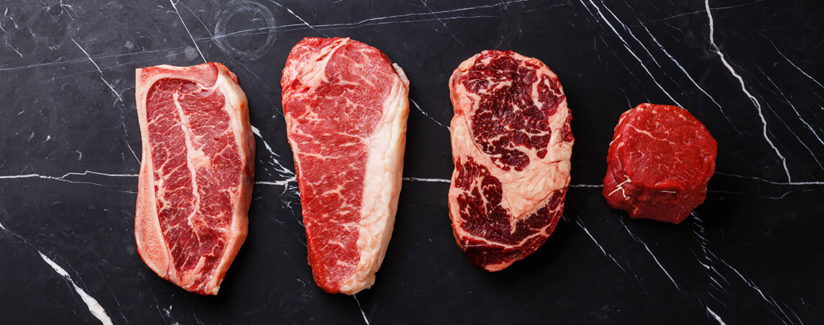
Dry-Aged Versus Wet-Aged Meat
07/31/2018
If you have ever been to an upper-end steakhouse there is a good chance you came across a dry-aged steak. What exactly is aging of meat and what’s the difference between that steak at the steakhouse and your steak at home?
We turned to Dr. Ty Lawrence, who has a doctorate in meat science and is a professor of animal science at West Texas A&M University, to get to the meat of the matter.
Aging of meat can sound strange, but it is a fairly simple process that occurs naturally in meat once it is processed. Aging of meat helps to make meat more tender which makes the consumer’s eating experience more enjoyable. “Aging meat is the process of allowing time to pass so that enzymes (specifically µ-calpain) can break down ultrastructural proteins, thus reducing the resistance to biting and chewing,” Dr. Lawrence said.
Aging is not a process used exclusively in one species since, “any muscle food that is uncooked and unfrozen is ‘aging’.” You can stop the aging process through cooking or freezing. “Once a product is cooked, those enzymes are denatured and are no longer functional,” he said. “The enzymes are not active while they are frozen – however, they do become active once the meat product is thawed.”
So what is the difference between dry-aging and wet-aging?
“Wet aging defines meat that was aged inside a vacuum package – the moisture is retained within the packaging,” Dr. Lawrence explains. “In contrast, dry-aged beef was aged outside a package and the cut (i.e. ribeye roll) lost moisture to the environment.”
The main difference in the two methods is a noticeable difference in flavor. “During the dry aging process, the fats oxidize and subtlety change in flavor. The lost moisture also causes a concentration of flavor, thus dry-aged meats most commonly have a more intense flavor profile,” he said.
Which process is more common? Dr. Lawrence says the beef you find on your grocery store shelf is most likely wet-aged.
“The majority of beef is wet-aged because it allows moisture to be retained. The moisture loss of dry-aged beef increases product costs and is typically reserved for high-end steaks,” he explained.
You can tell whether meat is dry-aged or wet-aged based on the price difference. “Dry-aged meat is almost always marketed as such and demands a higher price because the lost water weight must be compensated for in greater price,” Dr. Lawrence said.
Finally, curious about food safety, we wondered whether aging meat was safe.
“Yes, aging meat is a safe practice to ensure optimum eating experience.”
Aging is a natural process all meats go through to enhance the tenderness and flavor of the product. Dry-aging produces a more flavorful product but wet-aging is more commonly used because of the retained moisture and lower cost.


























